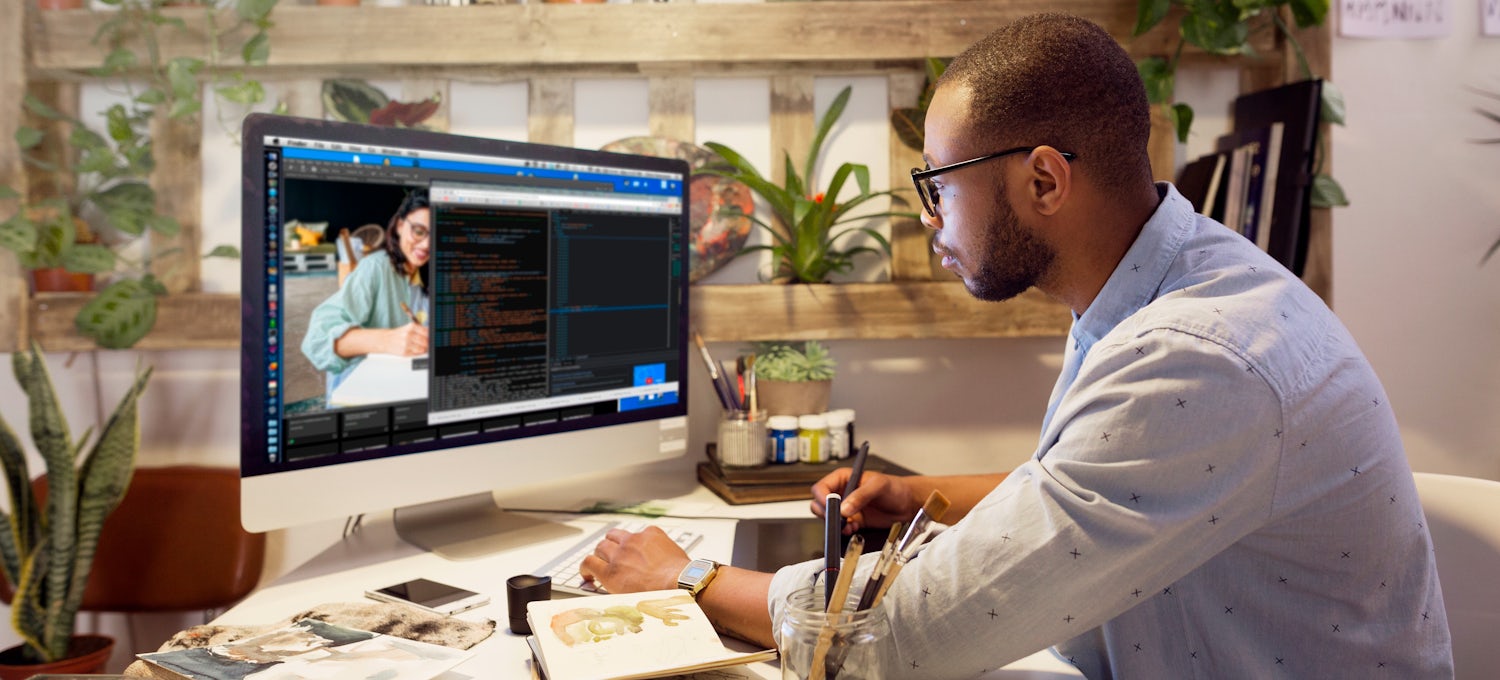Just How Professional Web Design Can Transform Your Online Existence
Wiki Article
A Comprehensive Overview to Crafting Aesthetically Appealing and Functionally Durable Web Layout Solutions
In the ever-evolving landscape of website design, the balance between aesthetic appeal and functional integrity stays critical. A detailed comprehension of foundational layout principles, together with a keen focus on customer experience, can substantially boost the effectiveness of internet services. By leveraging aspects such as shade concept and responsive layouts, developers are equipped to develop not only cosmetically pleasing interfaces yet likewise ones that cultivate user involvement. Nevertheless, the journey from principle to execution entails extra layers of complexity that merit exploration, specifically in the worlds of testing and optimization. What methods can be utilized to achieve this delicate stability?Comprehending Style Principles
Recognizing style concepts is essential to developing efficient internet services that involve users and interact messages clearly. These principles work as the foundation for any type of effective layout job, assisting the aesthetic and practical elements of an internet site. Trick layout concepts include balance, comparison, placement, rep, and closeness, each playing a crucial duty in developing a natural and visually pleasing layout.Balance entails dispersing visual weight evenly throughout a page, guaranteeing that no solitary component overwhelms the others. Contrast boosts readability and accentuates essential attributes, enabling users to browse the material effortlessly. Placement produces order and company, leading the customer's eye in a logical circulation. Repeating reinforces a regular visual language, reinforcing brand name identity and enhancing user knowledge with the interface. Proximity teams related components, helping individuals quickly recognize connections in between different items of content.
Relevance of Individual Experience
Customer experience (UX) is crucial in web style, as it straight affects how site visitors communicate with a site and view its value. A well-designed internet site not just brings in users but likewise keeps them involved, eventually bring about higher conversion rates and client satisfaction. UX encompasses various elements, including use, ease of access, and the general aesthetic appeal of the site.
In addition, favorable user experiences foster brand loyalty and motivate repeat brows through. Ultimately, focusing on user experience in internet layout is essential for producing useful, engaging, and successful sites that meet the demands of contemporary individuals.
Shade Theory in Website Design
Color theory plays an essential role in web layout, influencing not just the aesthetic appeal of a site yet likewise the emotional actions of its customers. Comprehending shade characteristics is crucial for developing an efficient individual experience. Colors can stimulate certain feelings; for example, blue often shares depend on and expertise, while red can impart excitement or necessity.Corresponding colors can produce vibrancy, while similar colors provide an even more serene feel. Making use of tools like color wheels can help in recognizing effective color mixes.
In addition, social context plays a significant function in shade analysis. While white symbolizes pureness in Western societies, it might represent mourning in some Eastern societies. As a result, a thorough understanding of the audience is important when using shade concept.
Incorporating color psychology right into website design not just enhances aesthetic allure however also influences individual habits, leading them toward preferred activities. Eventually, a well-balanced shade strategy can significantly elevate the total influence of a web site.
Responsive and Flexible Layouts
In enhancement to color concept, the framework and format of a website dramatically effect user experience and involvement. web design. Responsive and flexible designs are crucial techniques for guaranteeing that sites operate efficiently across a multitude of tools and display sizesReceptive style employs liquid grids and flexible photos, enabling the layout to readjust perfectly according to the viewport measurements. This technique guarantees a regular individual experience, as content reflows and resizes, preserving accessibility whether watched on a mobile phone, tablet, or desktop. Media questions play an important duty in responsive layout by applying different designs based on the tool's qualities.

Both methods aim to enhance user experience by prioritizing usability and ease of access. Choosing between receptive and adaptive designs mostly depends upon task demands, target audience, and desired user communications, ultimately adding to the effectiveness of website design services.
Testing and Optimization Strategies
Checking and optimization techniques are crucial components of reliable web layout, making certain that web sites not only fulfill individual expectations however also execute effectively throughout various systems. These approaches encompass a series of practices intended at evaluating functionality, functionality, and total performance.A/B screening is a foundational method, allowing developers to compare 2 variations of a website to establish which does much better in terms of customer engagement and conversion prices. Customer testing is just as vital; it includes collecting comments from actual individuals to recognize pain points and locations for improvement. This qualitative data can assist design changes that improve individual experience.
In addition, performance optimization methods such as photo compression, code minification, and leveraging browser caching can substantially enhance lots times and responsiveness. Devices like Google PageSpeed Insights and GTmetrix learn the facts here now provide valuable metrics for assessing website performance, allowing designers to make data-driven choices.
Verdict
To conclude, the assimilation of basic style principles, user-centered methods, and extensive testing methodologies is important for creating effective website design options. By prioritizing balance, comparison, placement, and shade theory, developers can boost visual appeal while guaranteeing functionality. Receptive designs contribute to a seamless customer experience throughout devices, further advertising interaction. Ultimately, the application of these approaches not just raises user complete satisfaction however also drives conversion prices, solidifying the relevance of a detailed design structure.Report this wiki page